Our appreciation for sound and underwater environments led us to take a closer look at Drexciya, an electronic music duo from Detroit active during the 1990s, particularly at the afrofuturistic nautical myth they developed in their album ‘The Quest’:
“During the greatest holocaust the world has ever known, pregnant America-bound African slaves were thrown overboard by the thousands during labour for being sick and disruptive cargo. Is it possible that they could have given birth at sea to babies that never needed air? (…)
Are Drexciyans water breathing, aquatically mutated descendants of those unfortunate victims of human greed? (…)
Do they walk among us? Are they more advanced than us and why do they make their strange music?
What is their Quest?”

Although “scientific progress” has made major areas of planet Earth graspable to humankind, parts of our planet still remain entirely mysterious and unknown. The environment of the deep-sea in particular, likely where life on Earth has its origins, is yet an uncharted territory hosting uncanny life forms. These endless bodies of water, we believe, are pertinent places for the construction of contemporary myths – they are projection surfaces for imagination and socio-political criticism, opaque spaces of speculation and remembrance.
The project AXECIDYR (an anagram of Drexciya) is a reformulation, an answer or a possible continuation of the underwater Drexciyan myth. It will narrate the encounter of humans with the mutant civilisation, descendants of enslaved people, during an operation of extraction of ores and minerals in the deep-sea. Referring to nautical tales and legends, this story will reflect on the ecological impact of humans on the sea and their physical invasion of waters – where life once began and where it often ends. Holding onto concepts introduced by Astrida Neimanis, the project proposes to open questions around the ocean as decentralised memory, the human body holding and sustaining water, and the hydro-commons as a drift into new ways of ‘caring’.


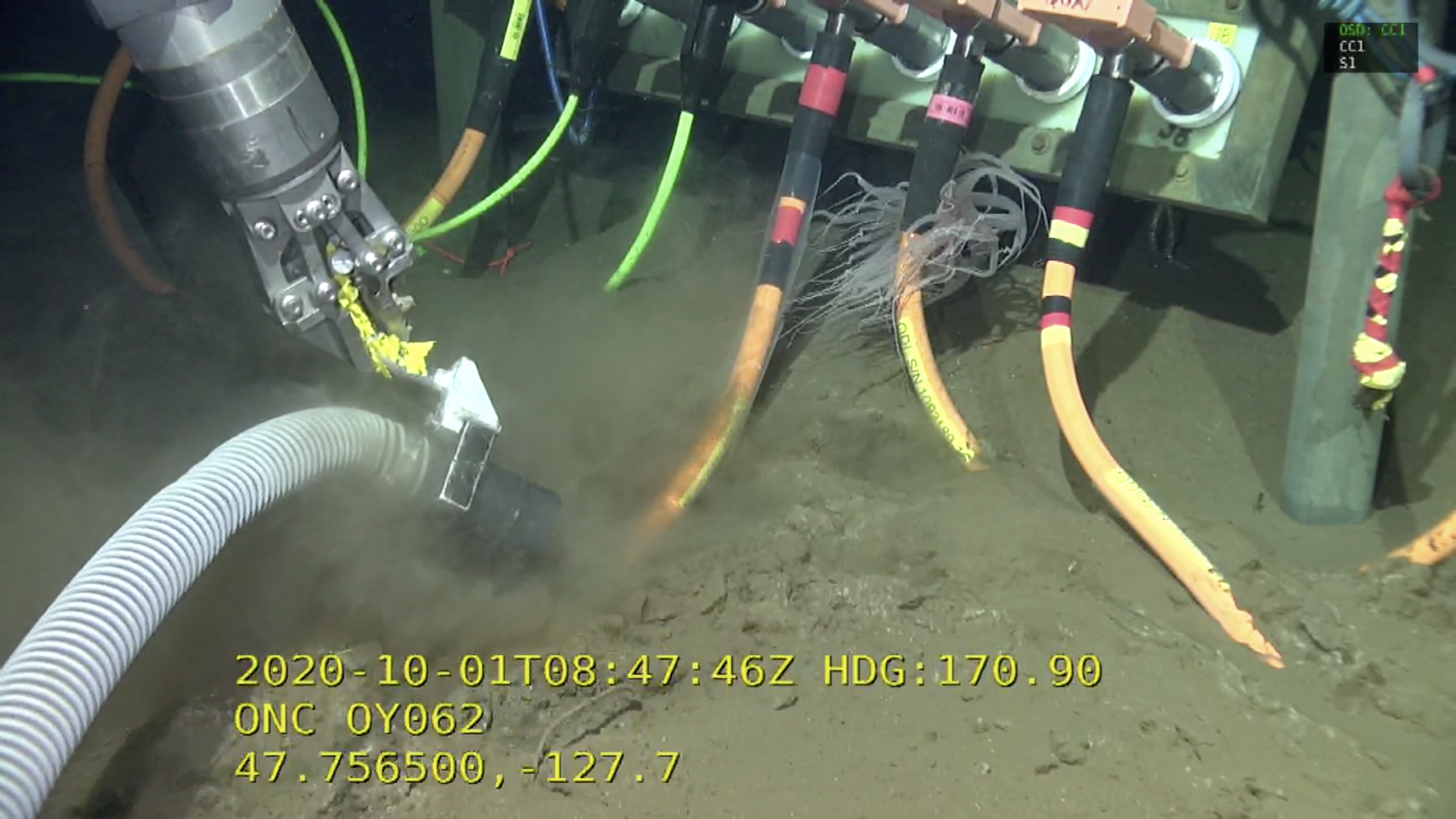
HYDROPHILIC BOUNDS, 2021
‘Hydrophilic Bounds’ is a film that marks the beginning of the AXECIDYR project, a collaboration between Diogo da Cruz
and Fallon Mayanja, and is imagined as the first chapter of a longer, more complex science-fiction narrative.
Fallon’s soundscape has set the rhythm and acoustic quality for this underwater world, while the multiplicity of narratives and
visual references brought by Diogo emerge in distinct layers, within a narrative developed from our dialogue.
An unknown underwater civilisation is limiting the quantity of oxygen produced by the sea,
killing over 300 million people after four years of the Deep Sea War. Dr Nadia Eckel, a marine
biologist adviser to the mining company IHC, has previously confessed that she accepted a bribe
to publish a scientific report, crucial to the approval of the first major extraction project. As the
suspect’s confession is not sufficient for proceeding with the case, with no other clues to the
bribery, inspector Diana Redstone has been looking for further proves of involvement. While the
interrogation unfolds Aidan is waiting to deliver a speech at a global summit, which has been
organised to halt the conflict.
--
Hydrophilic Bounds, 2021, loop 4K video, colour and sound 32 min
by Diogo da Cruy and Fallon Mayanja
starring Florine Zegers and Lea Vajda
colour correction by Afonso Mota
including footage from:
-Lost City 2018 Expedition, Woods Hole Oceanographic Institution - lostcity.biology.utah.edu
-Visualizing Deep-sea Mining, 2019 video from MIT Mechanical Engineering
-NEPTUNE Maintenance, September 2020 Ocean Networks Canada - SeaTube Pro
Excerpt of 3 minutes:
player.vimeo.com/video/616869094








DEEP SEA RISING, 2022
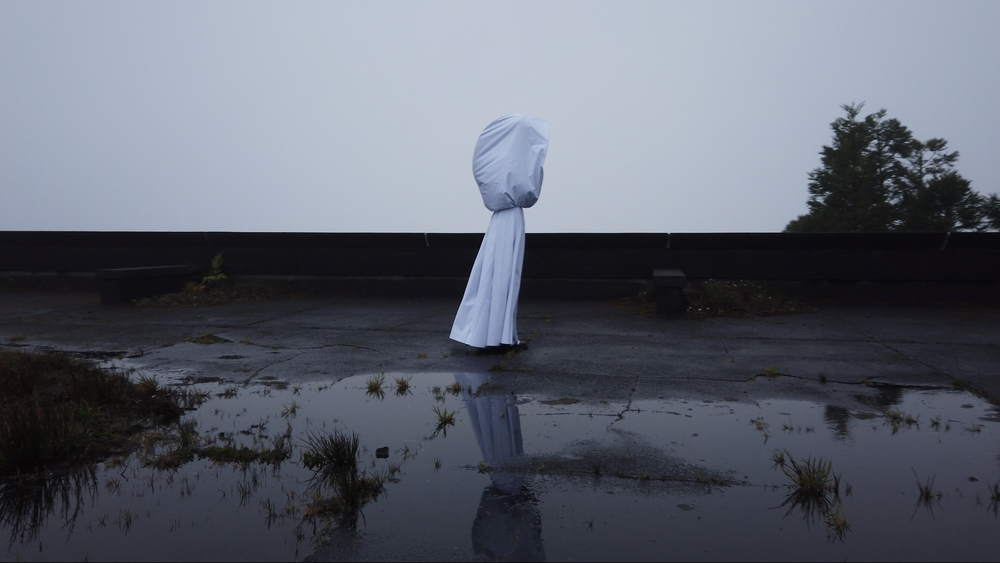


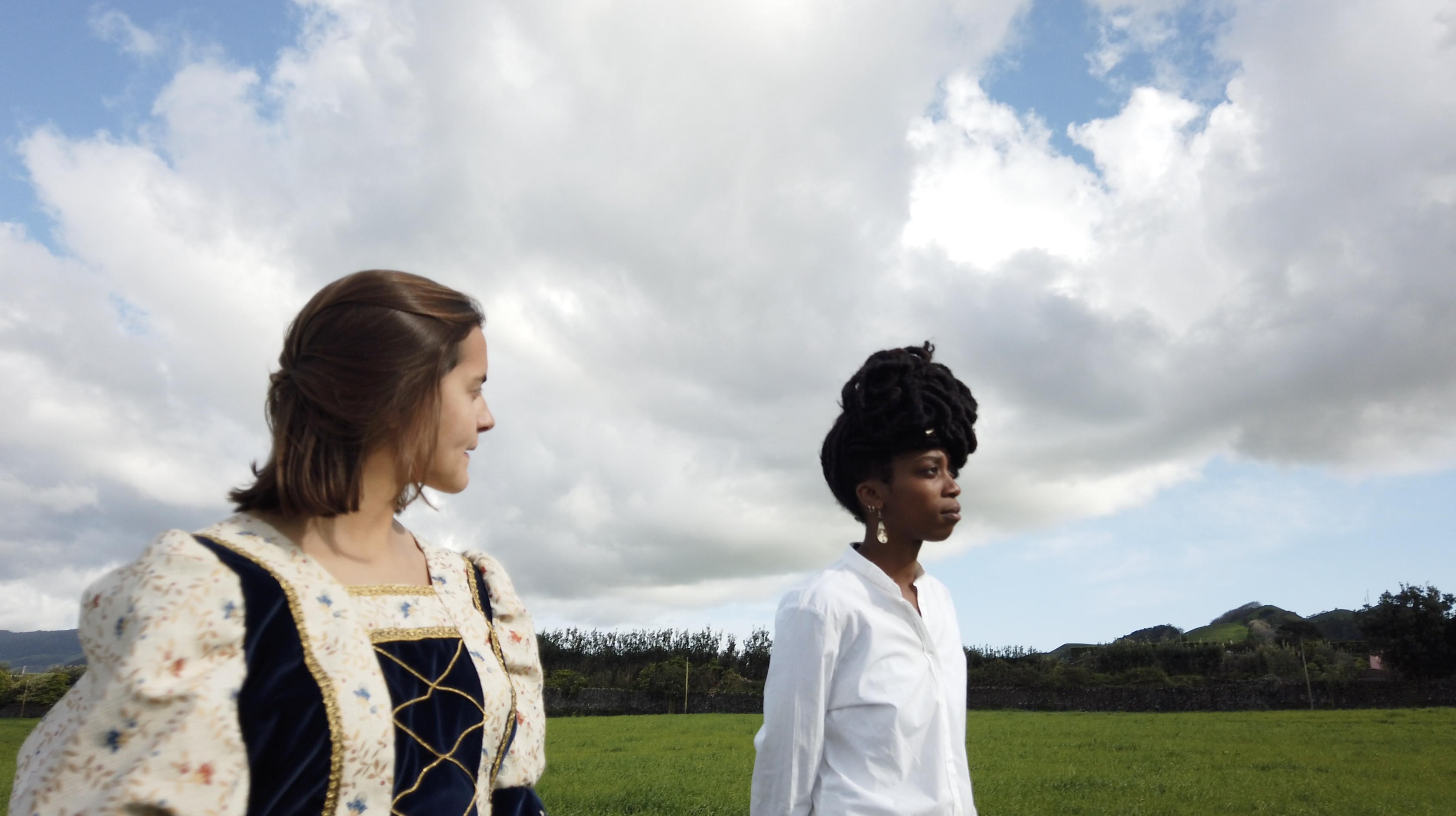



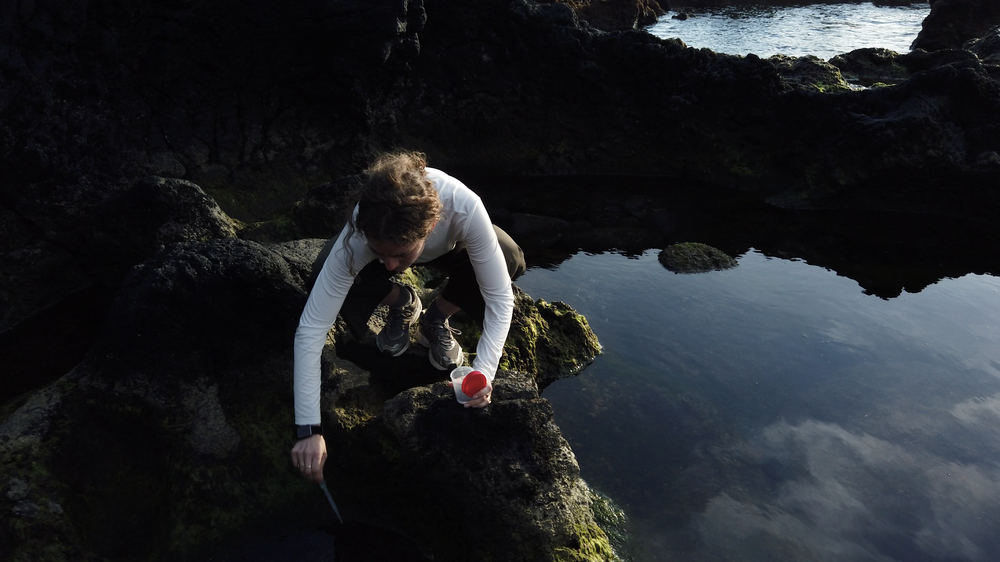









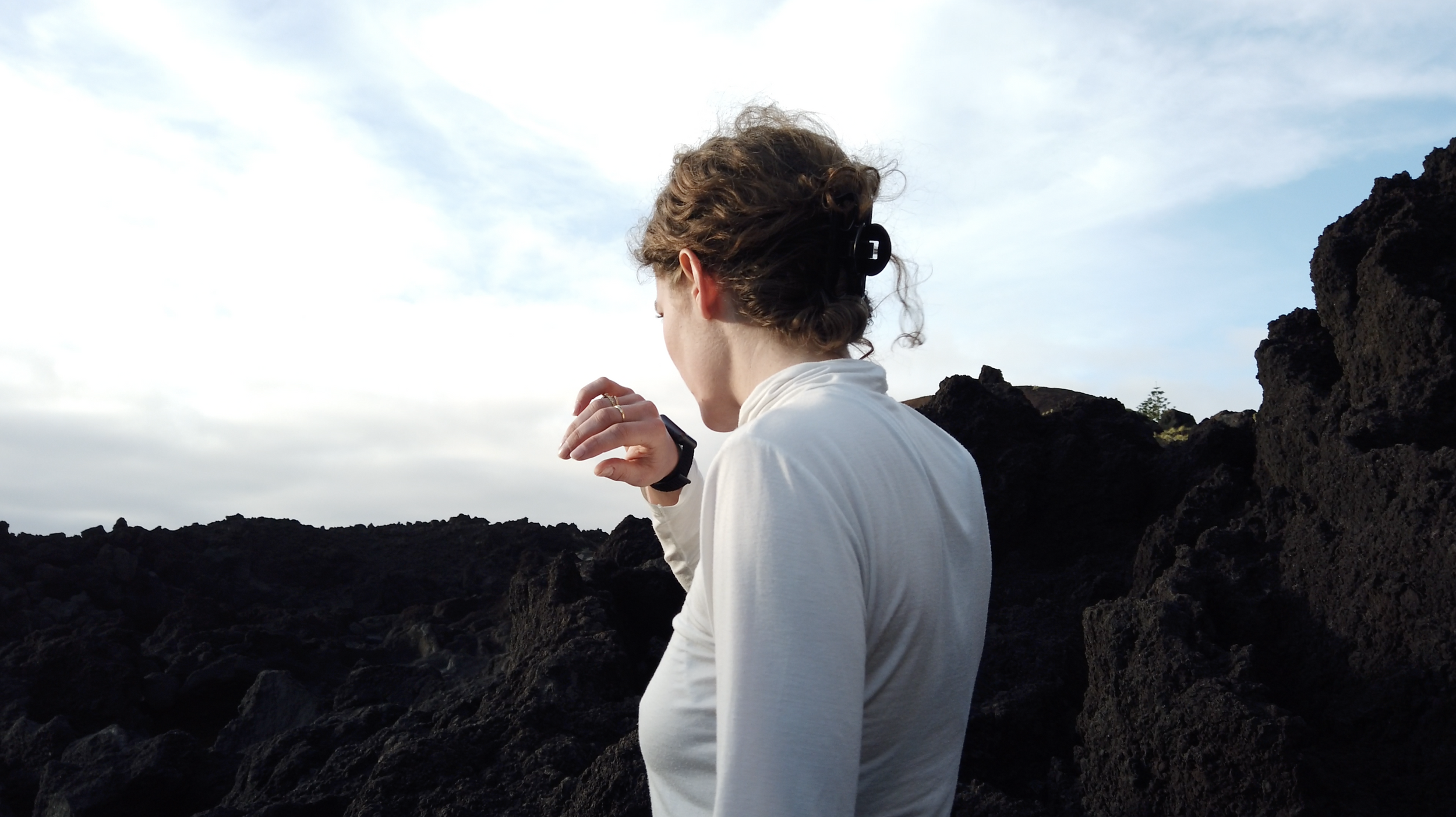

The film developed by Diogo da Cruz and Fallon Mayanja,
introduces a series of stories and poetic reflections associated with different locations on the island of São Miguel, inviting one to reflect on the ubiquity of water and to look at the Atlantic not only as the place of origin of life, but also as a container of memory, and a witness of colonial crimes.
After the Atlantic Research Centre has been bought by a mining company,
biologist Nadia Eckel returns to the Azores. This time with a very clear task: to
present a report that confirms the resilience of the seabed biosphere, allowing
the progress of deep-sea mining. However, in the course of analysing different
water samples, both from the ocean floor and from other environments on the
island, Eckel starts a dialogue with an unknown life form. Going back hundreds
of years, Carlota and Aidan talk about the crossing that brought them to the
island during a late afternoon walk. As the conversation unfolds, it becomes
clear that Aidan lives beyond the human timescale and reappears in different
forms throughout history, including after the extinction of the human species.
Through microscopic and macroscopic perspectives of the island’s volcanic
environment, the film invites us to reflect on the ubiquity of water and to look
at the Atlantic not only as the place of origin of life, but also as a container of
memory, a witness of colonial crimes committed by European countries. It is
also a reminder that the seabed is largely unknown, and that it may harbour
life forms capable of retaliating if humans continue to damage the marine
environment.
--
Deep Sea Rising, 2022, loop 4K video, colour and sound, 31 min
by Diogo da Cruz and Fallon Mayanja
staring Lea Vajda and Margarida Andrade
Camera: Diogo da Cruz, Fallon Mayanja and Florine Zegers
Sound recordist: Daniel Door
Color correction: Afonso Mota
With a version of the song “Tanchão” by Maria Antónia Fraga (Esteves),
performed by Joana Albuquerque Sousa
The project is the result of a residency in the Azores Archipelago between February and April 2022, presented in the 11th edition of Walk&Talk Festival.
with the support of
Steiner-Stiftung München
Stiftung Kunstfonds/NEUSTART KULTUR
Excerpt of 2 minutes:
https://player.vimeo.com/video/738614467
---------
LOOKING UP FROM UNDERNEATH, 2021
(DIOGO DA CRUZ)
The first group of sculptures by Diogo da Cruz related to the project were presented in “looking up from underneath” at Forum Arte Braga, Portugal in 2021. The exhibition featured the film “Hydrophilic Bounds”, a first episode on the science fiction series developed with the sound artist and performer Fallon Mayanja, who performed the piece “SENSING SATELLITE” for the finissage.




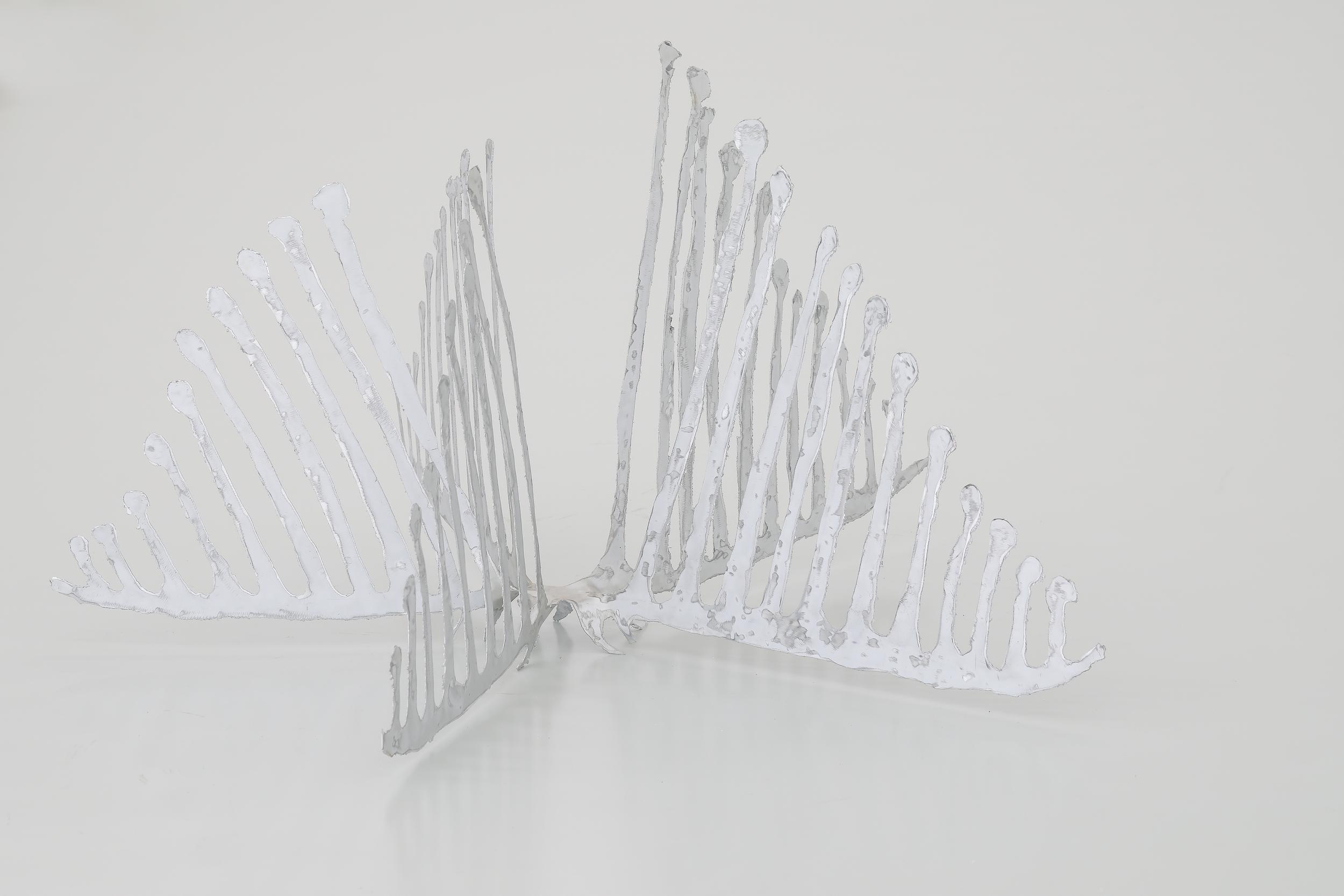





(photos by Adriano Ferreira Borges)
OUR WATERS WILL MEET, 2022
The project was further developed in 2022 at the Walk&Talk residency in the Azores, resulting in the exhibition “our waters will meet” with the second film “Deep Sea Rising”.
The exhibition proposes a science fiction narrative, which intertwines fragments of maritime mythologies with concerns around the
possible consequences of deep-sea mining. Addressing the theme of colonialism, natural resource extraction and technological development, it featured the
film “Deep Sea Rising”, the sculpture “Wave Jumper”, the performance “Sensing Satellite” and a series of underwater listening sessions.
The public sculpture “Wave Jumper” by Diogo which was made from rubble and surplus material from past editions of Walk&Talk, depicts an alien marine life form emerging near the harbour, prepared to defend its habitat.
Near the piece, at Piscinas do Pesqueiro, an underwater speaker was activated playing a composition by Fallon. Sound pieces that reflect the process of the film's creation and amplified the myth of an underwater civilisation.
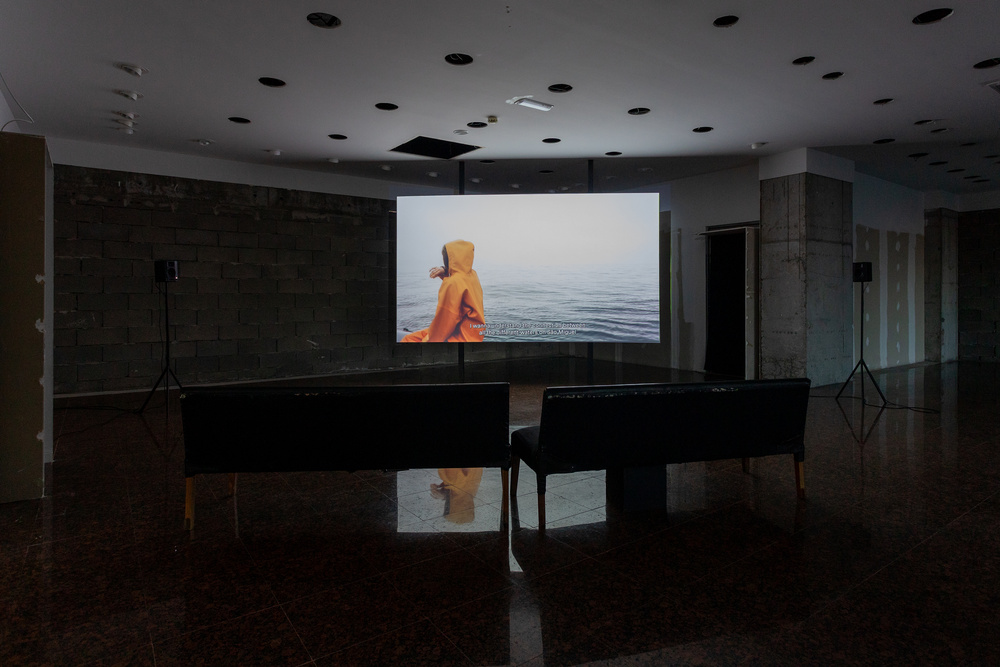
Deep Sea Rising, video installation, photos by Mariana Lopes
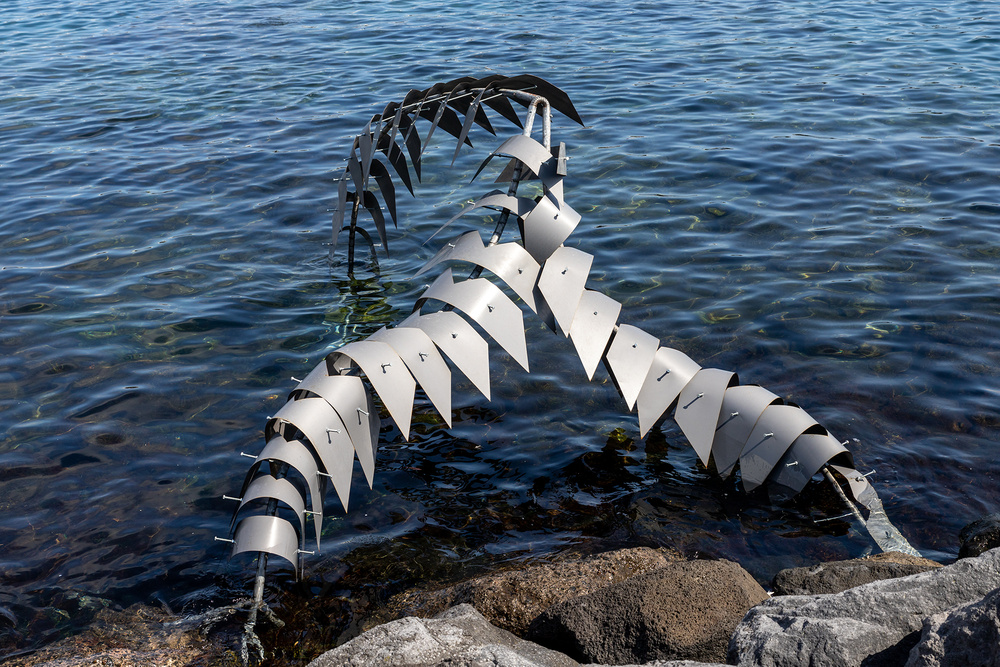
EXCURSION THROUGH MYTHS, 2022